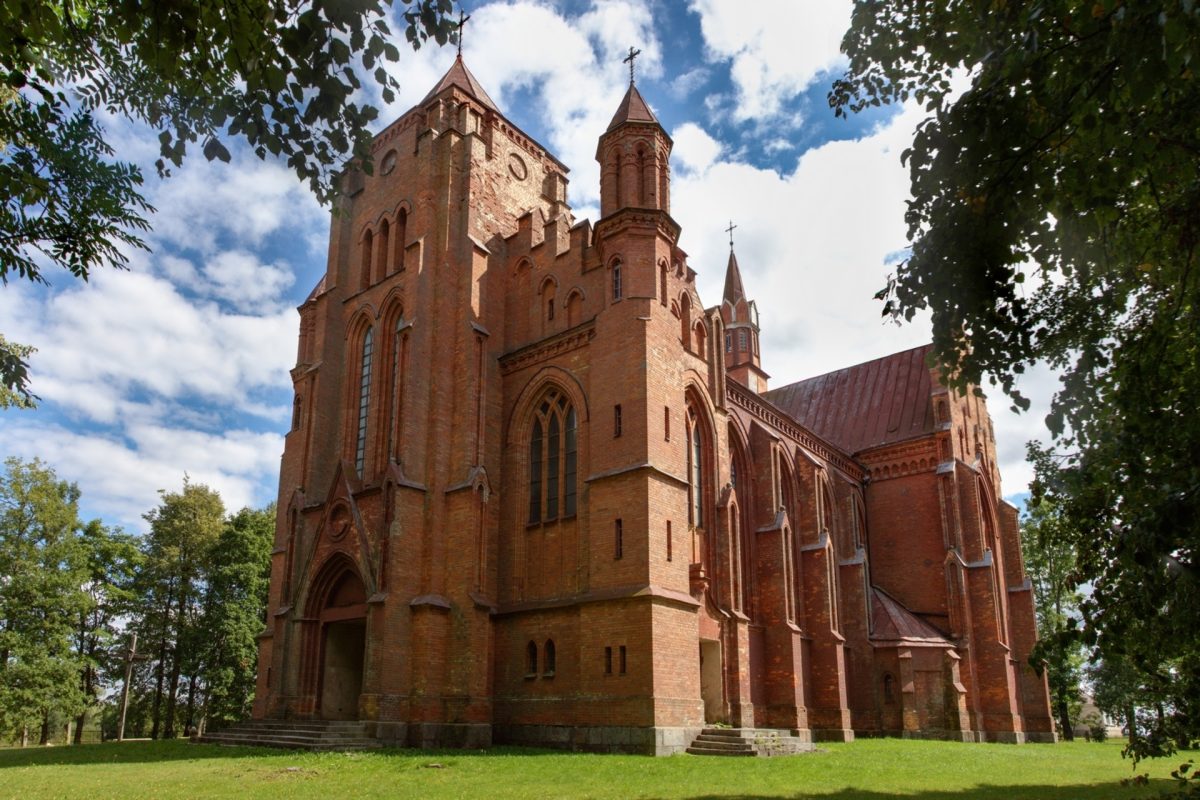Stulgiai Church of St. Matthew the Apostle and Evangelist

54

0

0
0 out of 5
(0 reviews)
The first Stulgiai Church of St. Matthew the Apostle and Evangelist was built in 1798. It was funded by Motiejus Minmantas, a landowner from Vaidatonys and a clerk of the Raseiniai Land Court, with parish rights granted by Bishop Steponas Giedraitis.
Info
-

Religious Heritage
-
The first Stulgiai Church of St. Matthew the Apostle and Evangelist was built in 1798. It was funded by Motiejus Minmantas, a landowner from Vaidatonys and a clerk of the Raseiniai Land Court, with parish rights granted by Bishop Steponas Giedraitis. In 1806, the church was not yet consecrated, but upon its construction and furnishing, it was blessed by Antanas Januškevičius, a canon of the Varnių Cathedral and the pastor of Kaltanėnai. The parish was relatively small. It extended 7 versts (an old measure of length equal to 1066.8 meters) from east to west and from south to north, encompassing 2 villages, 5 noble villages (akalicas), 1 hamlet, and 3 manors. During the time of Bishop Motiejus Valančius, 2629 Catholics lived in the parish. Minmantas allocated one valakas and one marga of land from Stulgiai village to the church on April 20, 1798, and this endowment was confirmed on August 6, 1801, amounting to 10,000 Polish zlotys. The one marga of land was designated for building a hospital and its gardens.
A hundred years later, as the first church increasingly fell into disrepair, plans were made to build a new church, and during its construction, the old church burned down. The chosen design was by Polish architect, academician of architecture, and Knight of the Order of St. Gregory the Great, Józef Pius Dziekoński (1844–1927). Churches such as the Šilalė Church of St. Francis of Assisi and the Adakavas Church of St. John the Baptist were built based on his designs, and he also restored the St. Anne's Church in Vilnius.
The construction of the Stulgiai Church was overseen by an exceptionally capable and thoughtful priest, the then pastor, who traced his lineage to the Karibut family – a delegate of the Vilnius Conference, author of popular booklets, contributor to periodical press, founder of the Order of the Knights of the Cross of Jotvingiai, and prelate Antanas Skinderis Kaributas (1869–1948). He claimed descent from the family of Duke Gediminas, hence adding the name Kaributas to his own. He spent twenty-seven years (1893–1919) in this parish. Skinderis was not only a clergyman but also a shrewd farmer. The construction of the church changed his fate, as the diocese authorities were
displeased with his farming, leading to his transfer to Požerė, where he established a peat bog.
The current church, built in 1910 in the small and poor parish of Stulgiai for a cost of 70,000 rubles, is a testament to this priest's ingenuity and resourcefulness.
The church is neo-Gothic, made of red brick, with a Latin cross plan, three naves, a single tower, and turrets. The main altar and two side altars were made by masters from a church furnishings workshop. The main altar is dedicated to the Blessed Mother of God. In its central niche is a sculpture of the Immaculate Conception of the Blessed Virgin Mary, with statues of Saints Peter and Paul on either side, and angels above them. The Stations of the Cross in the church are unique, with each painting having a metal plaque with the donor's name, indicating who lived in the region a hundred years ago.
Four wooden altars with statues of St. Anthony of Padua, St. Barbara, and St. Anne are placed along the walls. The church also houses a painting by the renowned artist from Šiauliai, Gerardas Bagdonavičius, titled "Trust in Divine Providence," hanging near the right side entrance. Additionally, there are two very large and heavy crosses with sculptures of the crucified Jesus Christ, created by folk artists in the first half of the 19th century.
It is believed that the organs were transferred from the Kražiai church to the Stulgiai church in the early 20th century, as the 1806 visitation record mentions new but smaller organs with 10 stops.
The churchyard belfry houses two bells. The larger bell has a diameter of 1.31 meters, and the smaller one, 65 cm. The larger bell features images of St. Anthony and St. Joseph and the following Lithuanian inscription: "SAINT JOHN JOSEPH ANTHONY COME TO OUR AID WHO HAVE DONATED THIS BELL // DURING THE GREAT JUBILEE YEAR OF 1901. DONATED BY JOHN JOSEPH ANTHONY AND OTHER BENEFACTORS." The bell was made in S. English's workshop in Warsaw and is believed to be the latest bell made by this master in Lithuania. The smaller bell bears the inscription: "FESTA DECORO ECCLESIAE STULGENSIS. FABRICAVIT FINLIANDSKI MOSQUAE 1875" ("I adorn the festivals of Stulgiai Church. Made by Finlandski factory in Moscow 1875").
Found a mistake?
Report

 Entertainment
Entertainment
 Food establishments
Food establishments





























 55.48557, 22.677917
55.48557, 22.677917
 Get directions
Get directions









